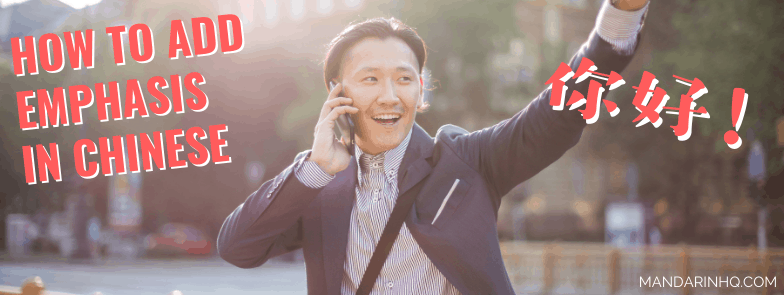Mandarin Chinese is a tonal language. When you alter the tone of a word, it affects the meaning.
This simple fact raises an important question:
"If you can’t change the pitch movement... then how do you place emphasis on certain words in a sentence to express emotion or make an important point?"
In this video we break down a number of real examples to show you exactly how it works for each of the four tones!
Want to Master Chinese Tones?
How to Add Emphasis in Chinese (Key Takeaways from the Video Above)
In Mandarin Chinese, there are three main ways to emphasise a syllable.
1. Make the syllable longer:
Draaaag out the vowel sound.
2. Make the syllable louder:
Increase the volume.
3. Pronounce the tone of the syllable clearly/fully:
If it’s a first tone, make it really clear that the pitch is high and flat.
If it’s a second tone, make it clear that it’s rising.
If it’s a third tone... well, we know that in natural speech the third tone is often pronounced as a low tone but when you emphasize a 3rd tone syllable, the pitch often moves down a little and then rises (i.e. a "full third tone").
If it’s a fourth tone, make it clear that it starts high and falls.
When placing emphasis on a word or phrase that has more than one syllable, native speakers either:
Place more emphasis on one of the syllables than the other(s)
or...
Place roughly the same amount of emphasis on both/all the syllables.
Note: Even if a particular syllable in an emphasized word is made longer or louder than the others, the tones on all the syllables tend to be pronounced clearly.
Want to Master Chinese Tones?
Have a question or comment about "adding emphasis" in Chinese? Leave a comment below
You might also find these posts interesting:


